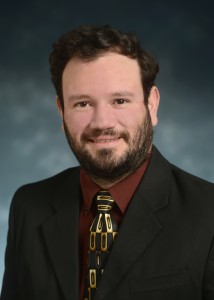TTI Competitive Research Program 2017
2017 Awardees:
Akram Abu-Odeh
Project Administrator I/Research Scientist, Roadside Safety and Physical Security
[email protected]
Project Title: Using Vehicle Dynamics Simulation and Surrogate Models to Understand Factors and Mechanisms Affecting Rollover
Abstract:
This project investigates the feasibility of developing surrogate model for rollover crashes using vehicle dynamics simulations. Expected project tasks and outcomes are as follows:
- Review the literature with respect to rollover simulation using vehicle dynamics and finite element simulations. Conduct a search of reports and papers that have used crash data analysis to identify factors affecting rollover accidents.
- Review current available tools for advanced surrogate modeling such neural networks. The suggested tool is LS-OPT since it is already has a generic interface for many simulation tools.
- Recommend vehicle models from the vehicle dynamics code (CarSim) to be used in the surrogate model construction.
- Review available finite element vehicle models that are suitable for vehicle dynamics investigation. The current thinking is to use the Chevy Silverado model as representative for light truck class and the single unit truck as a representative of a heavy vehicle.
- Perform surrogate model construction of roll angle through the use of Neural Network.
- Present the research outcome through final report
Raul Avelar
Project Administrator I/Associate Research Scientist, Roadway Safety
[email protected]
Project Title: Developing CMFs from Probability Analyses
Abstract:
Since the advent of the HSM, crash frequency is the basis for safety evaluations of countermeasures where ample crash data are available. One of the goals for safety analyses is estimating CMFs. The HSM defines a CMF as “the ratio between the number of crashes per unit of time expected after a modification or measure is implemented and the number of crashes per unit of time estimated if the change does not take place”. In other words, the change in expected crash frequency due to a countermeasure. The success of applying methods such as the cross-sectional, and before-after analyses to estimate CMFs is highly dependent on the size of the data available.
Significant challenges are present when evaluating the safety performance of improvements with limited crash data. It is generally accepted that a representative sample of locations is needed for a robust crash frequency safety analysis, but when crash frequency is significantly low, most sites in such a representative sample have zero crashes. Fortunately, probability-based analysis is applicable as long as the dataset contains an appropriate number of sites with and without crashes. Probability-based analysis (otherwise known as risk analysis) is therefore a promising alternative to overcome the issue of limited crash data for safety evaluations. However, it is not completely clear how a safety effect estimated from probability analysis relates to the crash-frequency- based definition of CMF in the HSM. Therefore, it is desirable to determine if reliable CMFs for countermeasures can be estimated using risk analysis in cases where crash data is significantly scarce, and thus non-representative samples are used. This research is important because it will determine if developing reliable CMFs using probability-based analysis is a viable option in situations when crash frequency is very low.
Project Title: Estimating Effects of Driver Age and Distraction on Freeway Operations and Safety Using NDS Data
Abstract:
This project will develop and calibrate a model to examine the relationships between driver age and distraction on vehicle speeds, following distances, driver reaction times, and crash risks. Expected project tasks and outcomes are as follows (tentative dates also shown):
- Literature Review. Summarize previous research on speed choice, vehicle-following behaviors, and crash risks, as these factors relate to driver age, driver distraction, and identify other potentially influential factors (e.g., congestion level, lane position, etc.). (October-November 2016).
- Conceptualized Model. Determine relevant variables from the existing dataset and develop a conceptualized model for car-following behavior, the resulting operational conditions, and a qualitative assessment of the ramifications to safety. This step will use the input of senior researchers in the areas of human factors, operations, and safety. (Late October 2016).
- Data Preparation. Inspect and clean NDS data, prepare a database for analysis, and identify and match relevant RID data that could supplement the NDS dataset. (November-December 2016).
- Calibrate Baseline Model. Calibrate the conceptualized model using data for drivers of all ages with no distractions and for events that did not result in a crash or near-crash; revise baseline model as appropriate. (January-February 2017).
- Development of Expanded Model. Using the baseline model, develop an expanded model that incorporates distraction behaviors and crash/near-crash incidents. This expanded model will be used to study how crash risk correlates with driver age, driver distraction, and other variables identified as critical in previous steps. (February-March 2016).
- Final Report/Paper. Document the outcomes of the research, including the effects of driver age, driver distraction, and other critical variables, and the degrees to which the interaction of these factors seem to impact speeds, following distances, reaction times, and crash risk. (April-May 2016).
Data to be used: The research team will use the Freeway data obtained for the strategic project led by Avelar/Hammond last fiscal year. This dataset consists of 847 events from the NDS (including 82 near-crash events and 10 crashes). There are 105 potentially useful variables and up to 300 speed readings per event. Gap and headway data are available for multiple events as well.
Advancement to the state-of-the-practice: This project will develop a quantitative framework characterizing the impact and interactions of driver age and distraction on operations and crash risk. The results are expected to: (1) provide formulations for realistic vehicle-following behavior, with potential for microsimulation implementation; (2) provide an estimation of crash risk given key operational conditions; (3) inform future research on older driver interactions with vehicle technologies; and (4) identify elements for improved strategies to driver outreach and education.
Srinivas Geedipally
Project Adminstrator I, Crash Analysis
[email protected]
Project Title: Evaluating Curve Speed Behaviour Using SHRP 2 Data
Abstract:
The first objective is to assess the transferability of the speed prediction models that were developed using Texas data. The second objective is to find whether driver familiarity has any relationship with the speeds on horizontal curves. The following tasks will be performed to accomplish these objectives.
- Obtain speed profiles of drivers in Indiana as they traverse through approach tangents and subsequent curves from the NDS data.
- Compare the observed speed profiles to predicted speed profiles obtained from (i) the model that was calibrated in TxDOT project 0-5439 to estimate tangent speed as a function of speed limit and curve radius and (ii) the models that were calibrated in TxDOT project 0-6714 to estimate curve beginning and ending point speeds as a function of the midpoint speed and other curve variables.
- Use the observed and predicted speeds to assess the severity of the curves (using the friction-based and energy-based criteria from TxDOT project 0-5439) and examine how the severity categories compare with crash frequency data from the same curves.
- Identify any relationship between speeds and the frequency that the given driver traverses the curve or road of interest. This task will identify the difference in speeds along the curve of a familiar driver when compared with an unfamiliar driver.
Data
The research team plans to use speed profiles from the existing data as the NDS vehicles traversed through approach tangents and curves. It is envisioned to collect the data stream that start at about 15 seconds’ travel time upstream of the curve beginning and end after the vehicle passes the curve ending. The team would also use the RID geometry and crash data as needed. The project team has access to all the data needed for accomplishing the study objectives.
Importance of Project
This research effort would strengthen the understanding of curve traffic operations and the relationship between curve speed choice and safety. Specifically, this effort will assess the transferability of both curve speed models and the methods to assess curve severity, which in turn can be used to diagnose and prioritize curve sites for safety treatments.





